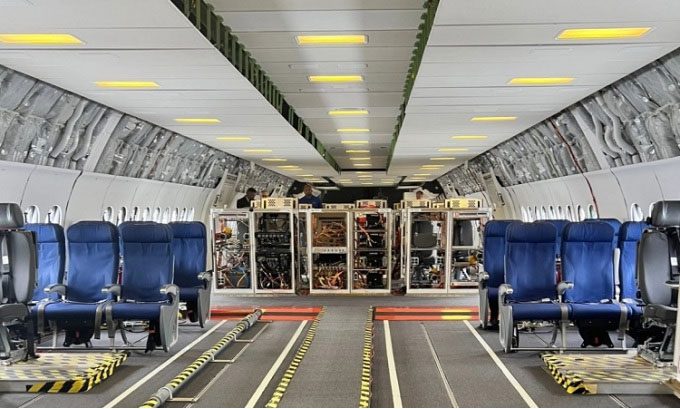The 777X aircraft will feature a wing folding mechanism, extending its wingspan to nearly 72 meters compared to its predecessor.
Boeing is in the process of developing the largest twin-engine passenger aircraft in the world, but the journey is long and challenging. In November 2013, the American aircraft manufacturer announced a completely new commercial jet model, the Boeing 777X, which includes two versions: the 777-8 and the 777-9. The company is also designing a freighter version, the 777-8F, expected to enter service with Qatar Airways in 2027, according to Business Insider.

The 777X aircraft family will include the 777-9 model. (Photo: Business Insider).
Boeing plans to launch the first commercial passenger model, the 777-9, to enter the market in 2025 with Emirates as its customer, a delay from the original schedule of 2020. Challenges surrounding the 737 MAX accidents, the pandemic, and supply chain issues have contributed to the delays. Boeing estimates it will incur more than $1 billion in abnormal production costs. They are also facing criticism from various airlines, particularly Emirates, over the delays.
However, with over 350 orders for the aircraft model, Boeing is prepared for the program. The company showcased the massive 777X test prototype at the Paris Air Show in June. Named Flight Test 1, the 777-9 is one of four test aircraft in the 777X fleet. Flight Test 1 has logged over 1,300 hours in 540 flights, as revealed by a flight test engineer. Each aircraft has specific goals, focusing on various issues such as automatic landing, environmental testing, low-speed performance, and twin-engine range.
Boeing manufactures test aircraft to explore the limits of the jet and gather data on new technologies, particularly the folding wingtip of the 777X. The test version is essential for certification and helps Boeing demonstrate to regulators the reliability of the technology and engines on the aircraft. The wing folding mechanism was developed to address the airport space requirements of the 777X.
The twin-engine passenger aircraft has a wingspan of 71.8 meters, longer than all previous 777 models. The extended wingspan adds lift and increases efficiency by an additional 10% compared to predecessor models and rival aircraft. In designing the 777X, Boeing aimed to ensure that the larger aircraft could still fit within the parking space allocated for the 777. Each aircraft type has specific airport requirements, including taxiway width and gate size, according to the Federal Aviation Administration (FAA).
Boeing wants to ensure that the 777X does not require new infrastructure, saving time and money for airports and operators. At the same time, the jet’s wingspan must be longer than the old 777 version to meet performance goals. The increased wingspan will enhance operational capability and reduce costs. Consequently, Boeing has added the folding wingtip system for gate parking. When the wingtips are folded, the wingspan is approximately 64.6 meters, comparable to the old 777 version.

Spacious interior of the 777X aircraft. (Photo: Business Insider).
According to Boeing test pilot James Hanley, when the aircraft slows down to around 93 km/h, the wingtips will fold. The wingtips will be locked in place during flight and cannot be controlled while in the air. The aircraft will alert the pilot if the wingtips have not deployed before takeoff. In addition to the wingtips, the test aircraft will evaluate various details, such as how the aircraft performs with ice accumulation on the wings, recovery from nosedives or uncontrolled spins, and how the aircraft handles adverse weather conditions.
The 777X competes with the Airbus A350, but the 777-9 version features larger and more spacious windows. Specifically, the 777-9 can accommodate 426 passengers in a two-class configuration. Boeing is working hard to deliver the first 777X aircraft and plans to collaborate with Emirates next year.





















































